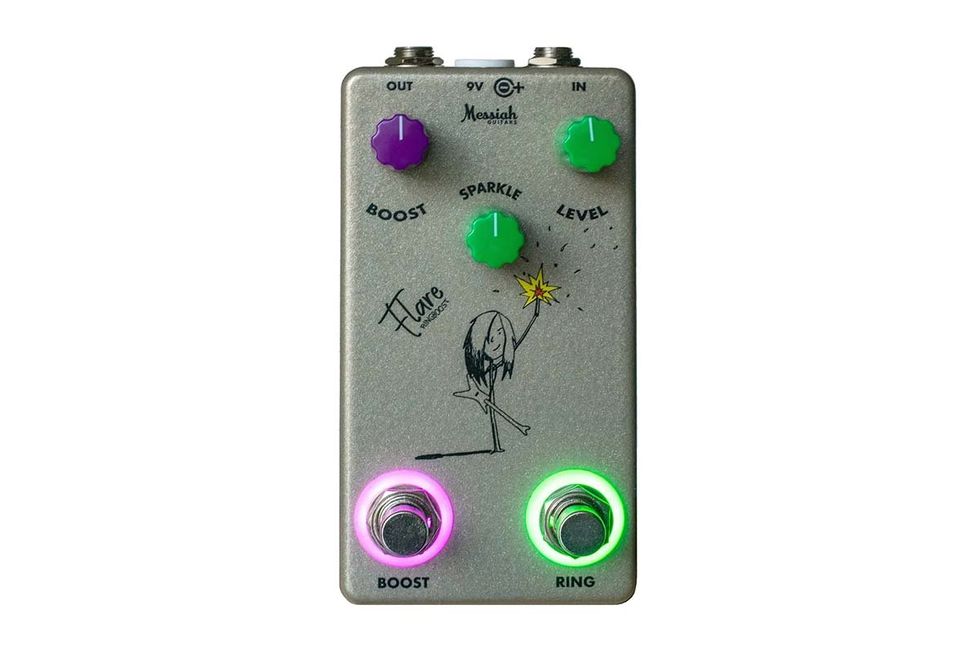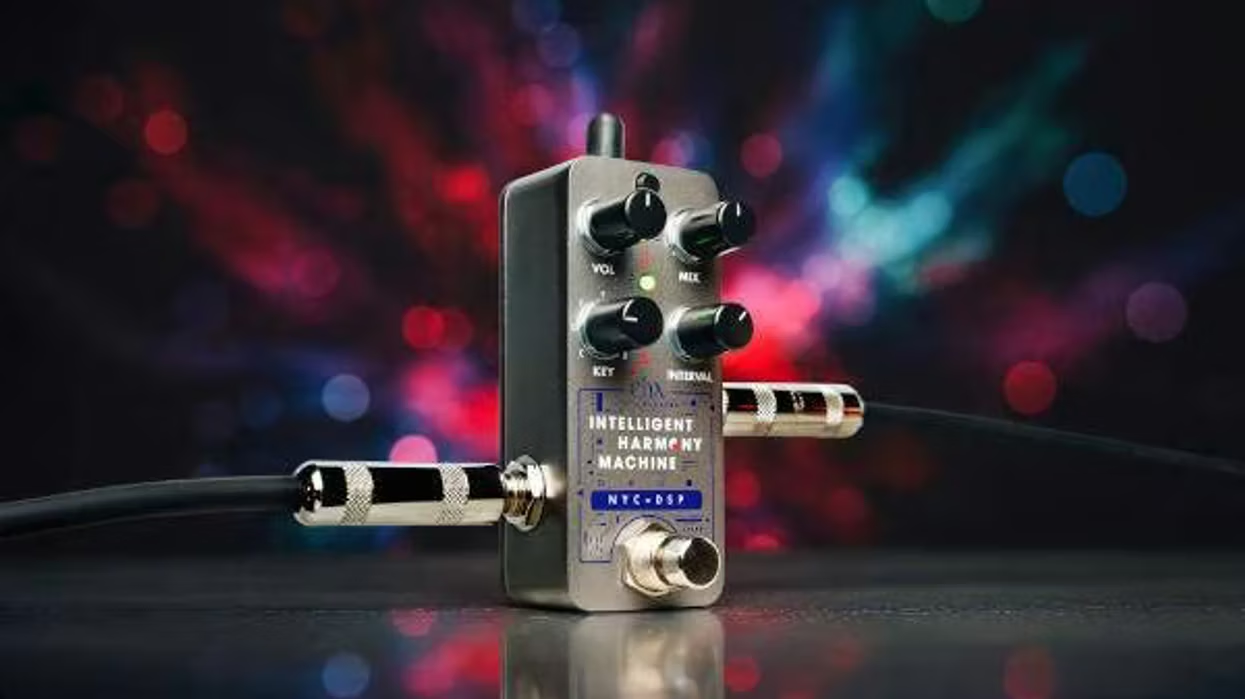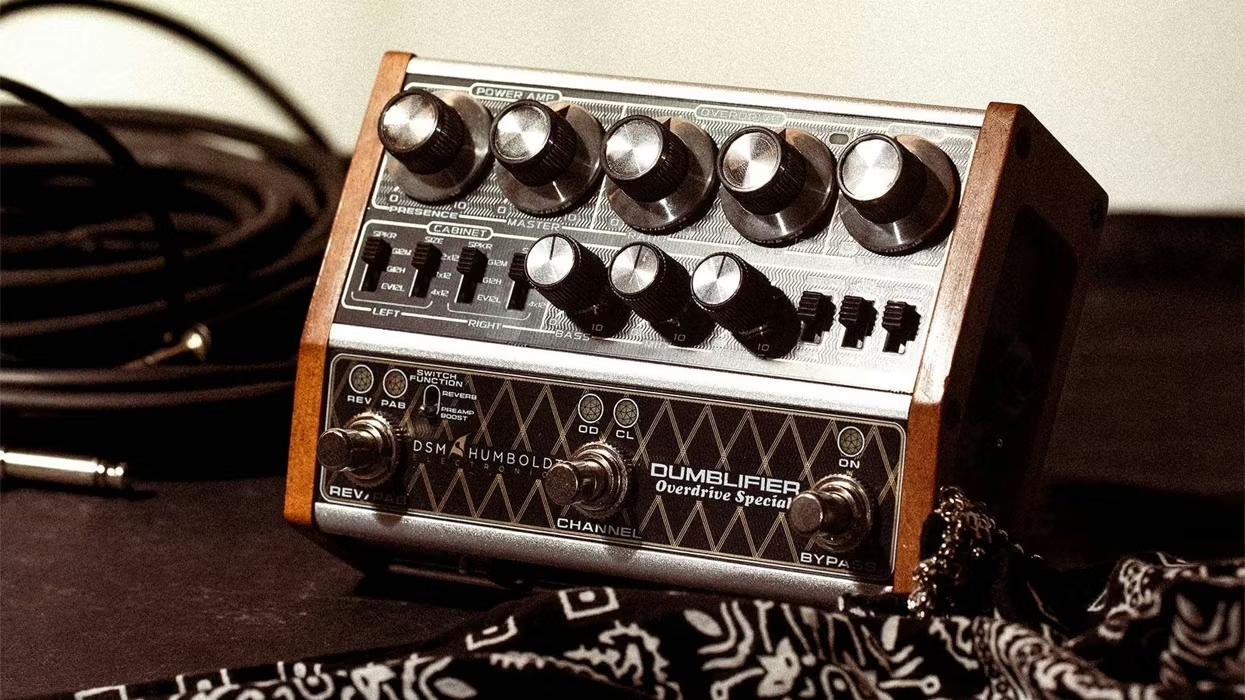Octave fuzz is a funny thing. Given its relationship to Jimi Hendrix alone, you’d think it would be a fixture on practice room floors the world over. But vintage octave fuzzes can be unruly little monsters. They can seem thin, harsh, and inflexible. And as a consequence, guitarists that aren’t deterred by failing to automatically emulate Jimi are often from demented and restless reaches of the player spectrum. Such players are very likely to love Messiah Guitar’s Flare.
Origins in the Underappreciated
The Flare may feel new and unfamiliar to guitarists that haven’t dabbled in octave fuzz much. But its circuit is rooted in an underappreciated, classic octave-up fuzz and ring modulator, the Dan Armstrong Green Ringer, as a well as a popular modification to the Green Ringer, the B.Y.O.C. Armstrong Twin. The Flare differs from the Armstrong Twin in the sense that the B.Y.O.C. circuit uses a Dan Armstrong Orange Squeezer compressor as the source of boost, where the Flare uses a MOSFET-derived boost circuit. Almost any gain source in front of a Green Ringer makes a powerful pair, and the Flare makes the most of the potential in that relationship. But it also explores additional variations by offering a tone control (called sparkle) and an output level control that reshapes how the boost interacts with the octave effect. And by making the boost and octave circuits operable independently or in tandem, the possible tone permutations become thrillingly abundant.
Toasty to Terrifying
If you use the Flare with a uniform dynamic approach, its many sounds can seem like variations on a theme. But the Flare, like the Green Ringer before it, is a surprisingly responsive effect if you vary your approach. It exhibits a touch sensitivity that enables you to alter the pedal’s personality profoundly depending on the pickups you use, whether you use the fleshy part of your thumb, fingernail, or a flatpick, where you pick along the length of the string, and, of course, where on the fretboard you fret the string.
Humbuckers and single-coils are both capable of summoning exciting overtones and the fuzzier side of the Flare’s personality, which usually appears when guitar tone is wide open. But the variation in the fuzz colors is impressive. Picking a Telecaster right at the bridge and using the bridge pickup generates awesome electric sitar sounds. But using the exact same guitar and pedal settings and playing light fingerstyle closer to the neck produces warm, smoky, and blooming tones that manage to be hushed and hint at menace and explosiveness at the same time. Using a pick, meanwhile, yields toppy, focused, grinding and surprisingly intact power chords. Humbuckers are, in some respects, the more predictable and inviting pairing. They generate the fattest, fullest fuzztones, produce the hottest octave presence when fretting at higher registers, give up molasses-thick chord tones, and can produce Clavinet-like keyboard tones.
By utilizing the sparkle and level, these sounds can be made less bossy or shaped to deemphasize the high octave. If you’re on the prowl for sounds that will make a solo stand out like a neon sign in the open desert, the available tone colors here are astoundingly abundant. Those sounds are made more numerous and often more complex by the MOSFET boost, which, somewhat counterintuitively, adds smoothness as well as mass and fullness to the octave signal.
The Verdict
The Flare underscores just how subjective pedal evaluation can be. As we said at the top, any octave fuzz is a quirky device, and the Flare is typically idiosyncratic. But while it won’t fit in every musical style or suit every player’s approach, there are copious sounds here that open-minded musicians can use as a path away from well-trodden fuzz lanes, or as a way to bring a hook or solo startlingly, arrestingly to life. The Flare isn’t all lunacy either. The sparkle and output level enable variations on Green Ringer themes that weren’t available in the original, and many of these tones can lend cool punctation or contrast in the context of softer, more spacious, and less overtly rocking song settings—particularly with a little delay in the mix. That said, situating a fuzz in front of the Flare is pure adrenal joy, and an experience no vintage fuzz freak should miss.
Because the Flare won’t be every player’s idea of tone ecstasy, the reader should consider the accompanying scores as fluid. I fell in love with the way the Flare sounds and responds to dynamics. Less searching guitarists with more conventional tastes might want to round down tone and ease-of-use scores. At almost 200 bucks, the Flare is not an inexpensive path to fresh, radical tones. But it is a high-quality take on the proven octave-fuzz template that adds a thoughtful and constructive twist. The results are an addictive delight.























